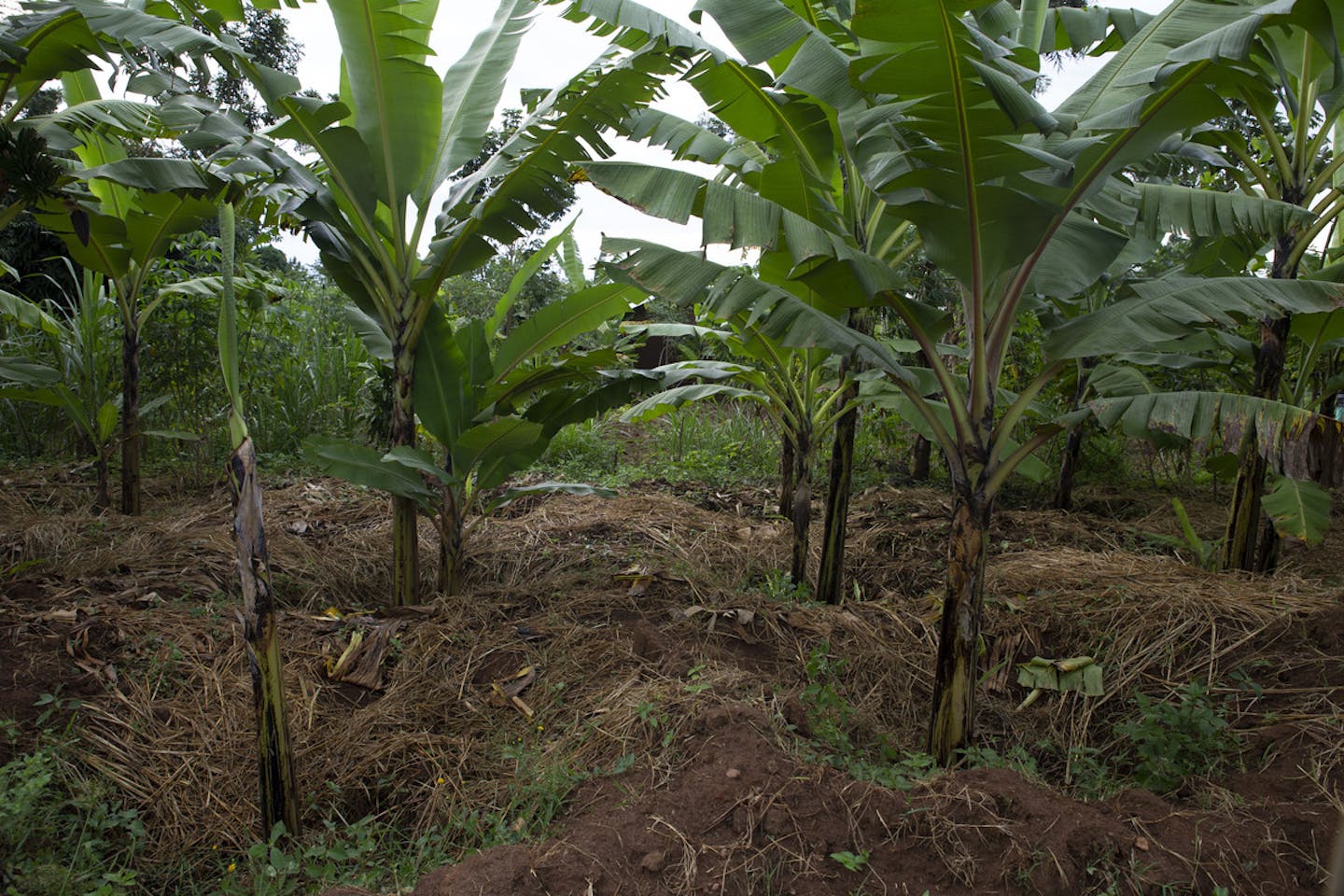Farmers in Uganda are recovering soils using natural “dams”
Matanda Stephen, a retired education officer in Eastern Uganda’s Mbale district, decided his banana farm needed a better relationship with nature to stay productive. Now, he’s leading regenerative efforts among farmers in his community, who are transitioning to more sustainable practices.
The soil type is sandy in this region, meaning the moisture retained in the ground is very low. This makes it difficult to successfully grow crops, as plants require water and damp soil to grow efficiently. Arid conditions make Busobo, where Stephen’s farm is located, very climate-vulnerable.
To combat this issue, Stephen decided to create “dams” in his garden, which help the sandy soil hold water for up to 24 hours. With this method, the soil can retain this moisture level for at least three weeks. With proper training, Stephen says this process could help more farmers in his community increase production like him.
%20and%20without%20water%20dams.jpg)
Masaba has adopted the water dams method in one part of his garden. In the photograph is a contrast between the two parts of the garden with water dams (right) and without water dams. Image credit: Courtesy of Watsemba Miriam
Holding water
The “dams” aren’t exactly the type that most would imagine. Instead, Stephen uses natural ingredients to hold water in the soil.
According to Stephen, the decomposed grass acts as a trap for water and moisture after the rains. But the process isn’t over after this. He then covers the garden with dry banana leaves and rice husks. This mulching aims to retain as much moisture as possible and prevent it from escaping through evaporation. Eventually, when the harvest arrives, Stephen cuts the banana stems and leaves them on the ground to act as a source of additional fertilizer.
The more moisture soil can retain, the more fertility it has. As a result, Stephen and his wife, Jenifer, have seen an increase in their harvests. This method has also reduced the need for weeding and pruning as the mulch cover slows the growth of unwanted vegetation in the garden.
..jpg)
A close picture of a part of Mr.Matanda’s plantation. The suckers grow really tall and continue to multiply and produce more matooke (banana bunches). Image credit: Courtesy of Watsemba Miriam
Need for training
Farmers in Busobo are now taking up the idea and implementing it in their gardens. Stephen says most of the villagers simply pass by and copy through observation. Subsequently, many of them take up the practice without the necessary knowledge to make it work.
However, one of the limitations of training farmers is the cost. “The problem I foresee with scaling out is access to the right suckers, costs of transport, and, of course, labor. Digging the dams is quite labor-intensive,” says Stephen.
Another limitation in Busobo is the quality of the banana trees people plant. Stephen says he had to import suckers from his home village in Bududa. When he retired to Busobo, he quickly noticed that the banana plantations in the area were not healthy, resulting in low production.
Stephen believes that Busobo can become a more prominent supplier of bananas in the next five years with the right time investment and patience. This will create employment opportunities for many youths in the village, increase household income, and enable parents to afford better education for their children.



